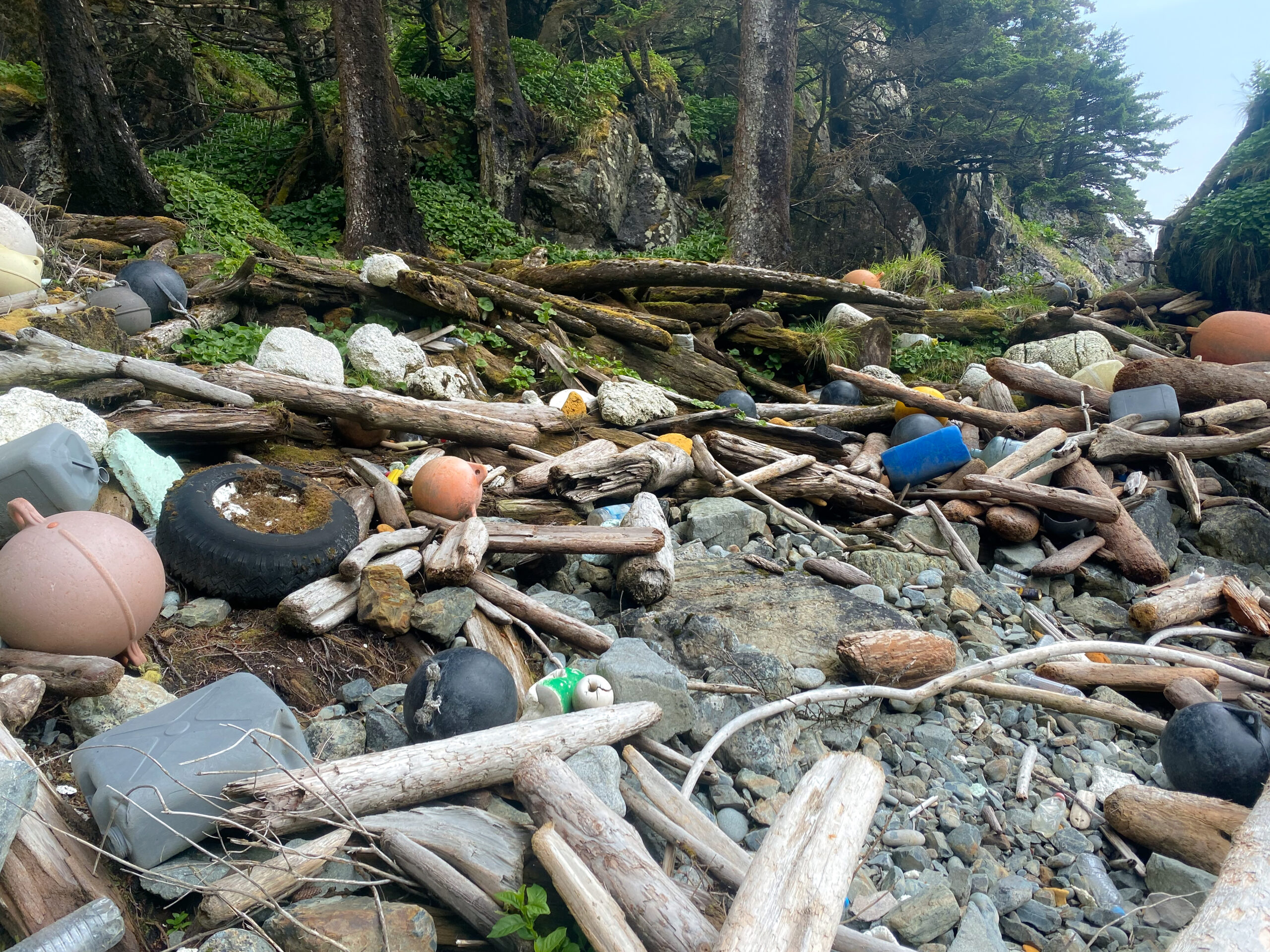NEWS: NOAA to Award Ocean Conservancy $5.2M to Remove Large Debris from U.S. Coastal Waters
Efforts will Focus on Bulky Debris in Remote Locations that Cannot be Collected by Hand in Alaska, California, Florida and Beyond; $2.2M to be Awarded to Community Organizations Through National Competitive Regranting Program

WASHINGTON – Today, the National Oceanic and Atmospheric Administration (NOAA) Marine Debris Program announced its recommendation of $5,218,000 in funding to Ocean Conservancy through the Bipartisan Infrastructure Law to support efforts to remove large marine debris from U.S. waters. Efforts will focus on debris in remote, hard-to-reach marine environments; bulky debris requiring special resources to remove, such as boat parts, construction materials and tires; and abandoned, lost, or discarded fishing gear, also known as “ghost gear,” including large fishing nets and “gear balls” – tangled masses of rope traps and other fishing equipment. Ghost gear – much of which is made of plastic – is the most harmful type of debris for marine animals, and all large marine debris threatens marine life and sensitive ecosystems.
This four-year grant will enable Ocean Conservancy to conduct cleanups and gear removals and implement ghost gear prevention best practices with partners in Alaska, California and Florida. In addition, Ocean Conservancy will issue $2.2M through a competitive process to remove large marine debris in coastal communities across the country.
“These will not be typical beach cleanups,” said Ocean Conservancy’s Senior Director of Conservation Cleanups Allison Schutes. Over nearly 40 years, Ocean Conservancy’s International Coastal Cleanup® has mobilized 18 million people to remove 380 million pounds of trash from beaches and waterways worldwide. “Yes, we will undoubtedly recover plastic bottles, bags and other smaller items that commonly pollute our ocean. But this grant will allow us to go to remote locations heavily impacted by debris and deploy specialized equipment to remove items too large to remove by hand.”
“We are incredibly grateful to NOAA for supercharging this important work and recognizing the value of both ghost gear prevention and cleanup,” said Ocean Conservancy’s Senior Director of the Global Ghost Gear Initiative (GGGI) Ingrid Giskes. The GGGI is the world’s largest alliance of governments, fishing companies, scientists, nonprofits, and other stakeholders dedicated to preventing and removing ghost gear. Since its inception in 2015, the GGGI has facilitated the removal of hundreds of thousands of pounds of ghost gear from ecosystems all around the world.
Addressing debris and fishing gear in Alaska, California and Florida will protect wildlife, support Indigenous livelihoods, and boost tourism
In Alaska, Ocean Conservancy will partner with the Yakutat Tlingit Tribe, Sitka Sound Science Center, and Norton Sound Economic Development Corporation to remove large accumulations of marine debris, including derelict fishing gear, from shorelines in rural and hard-to-access sites around the state.
“Even Alaska’s most remote shores are often littered with marine debris,” said Ocean Conservancy’s Manager of Arctic Marine Debris Kristina Tirman, who is based in Sitka, Alaska. “Everything from small plastic fragments and bottles to large pieces of net and line wash up in huge quantities. The debris harms wildlife and negatively impacts livelihoods, food security, and other aspects of life in coastal communities. We are excited to be supporting partners in Yakutat, Sitka and the Norton Sound region as we work together to mitigate the impacts of marine debris in these critical ecosystems.”
“Marine debris is not just a threat to marine life; it endangers the livelihoods and cultural practices of Indigenous communities who have stewarded these Arctic waters for millennia,” said Ocean Conservancy’s Vice President of Arctic Conservation Barbara ‘Wáahlaal Gidaag Blake, who is a member of the Káat nay-st/Yahkw Jáanaas (Shark House/Middle Town People) Clan in Alaska. “The Arctic is a critical region for global biodiversity and plays a vital role in regulating our planet’s climate. This funding from NOAA supports our collaboration with local tribes to remove this harmful debris, protect these essential ecosystems, and ensure the resilience of communities that are key to maintaining the health of our planet.”
In California, Ocean Conservancy will conduct workshops to help lobster fishers in the Santa Barbara Channel and Channel Islands and commercial fishers in the Port of Los Angeles area implement best practices to tackle ghost gear. The Santa Barbara and Los Angeles port areas are California’s two largest commercial fisheries ports by seafood volume, according to the California Department of Fish and Wildlife.
In Florida, Ocean Conservancy will partner with the Lower Keys Guides Association to engage local anglers in removing marine debris from hotspots in boat accessible mangroves in the Lower Keys and Key West, home to beloved animals such as the West Indian manatee, green sea turtles and seven species of dolphins that are highly susceptible to debris entanglement.
“Florida is widely regarded as the sportfishing capital of the world, and healthy commercial and recreational fisheries benefit coastal communities there to the tune of billions of dollars,” said Ocean Conservancy’s Director of Florida Conservation Jon Paul “J.P.” Brooker. “There’s a powerful appetite among Florida anglers and other ocean and coastal stakeholders to address the problem head-on, and we’re thrilled to be doing this work with the people who are critical stewards of Florida’s ocean resources.”
“We are proud to support Ocean Conservancy’s comprehensive efforts to remove large marine debris, prevent derelict fishing gear in the future, and oversee a national funding competition for communities to address local marine debris issues,” said Bipartisan Infrastructure Law Program Manager for the NOAA Marine Debris Program Amy Gohres. “From Florida’s coral reefs to Alaska’s rocky intertidal shoreline, this project will protect marine life and benefit fishing communities across the nation.”
###
ABOUT OCEAN CONSERVANCY
Ocean Conservancy envisions a healthier ocean, protected by a more just world. Ocean Conservancy is working to protect the ocean from today’s greatest global challenges. Together with our partners, we create evidence-based solutions for a healthy ocean and the wildlife and communities that depend on it. For more information, visit oceanconservancy.org, or follow us on Facebook, X (formerly Twitter) or Instagram.
Media Contact